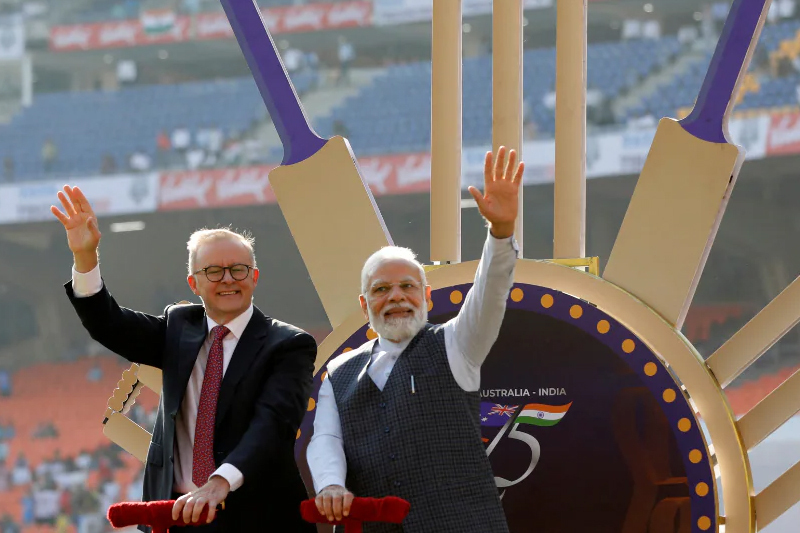
India-Australia Ties: Understanding Cricket And Quad’s Role In Geopolitics
The ICC Men’s Cricket World Cup 2023 was no less than a journey of unexpected outcomes. Australia grabbed the coveted trophy in a nail-biting clash against India on Sunday. The result might have led to a billion heartbreaks, but the geopolitics game was stronger than ever.
In Kolkata’s Eden Gardens, as Australia played against South Africa in the second semi final, the geopolitical playground of Ahmedabad for the final had its permutations and combinations ready. It was a clash between India’s fellow Brics member and New Delhi’s Quad partner.
India’s Strong Diplomatic Ties With Australia
The Ahmedabad stadium was the exact venue where Indian Prime Minister Narendra Modi and his Australian counterpart Anthony Albanese in March had marked “75 years of India-Australia friendship through cricket” as they handed caps to rival captains Rohit Sharma and Steve Smith.
The photographic symbolism of that Test match held significance as a boost to India’s already strong diplomatic relations with Australia, another member of the Quad grouping. For the final, Albanese deputed Deputy Prime Minister Richard Marles in Ahmedabad.
The India-Australia summit clash coincided with the second edition of the “2+2” ministerial dialogue between Marles and Foreign Minister Penny Wong with their Indian counterparts Rajnath Singh and Dr S Jaishankar in the capital New Delhi.
Keep Reading
Add Sporting Warmth To The Security Equation
Launched in 2018, the 2+2 ministerial dialogue is a format of meeting of the foreign and defence ministers of India with the countries it shares close relations with. In Delhi, the Australian Defence Minister Marles also played Gully Cricket.
The Quad grouping is a diplomatic partnership between India, Australia, Japan and the US, aimed at supporting an open, stable and prosperous Indo-Pacific. Add Cricket and the World Cup, and an expansive bilateral equation gains the spotlight.




